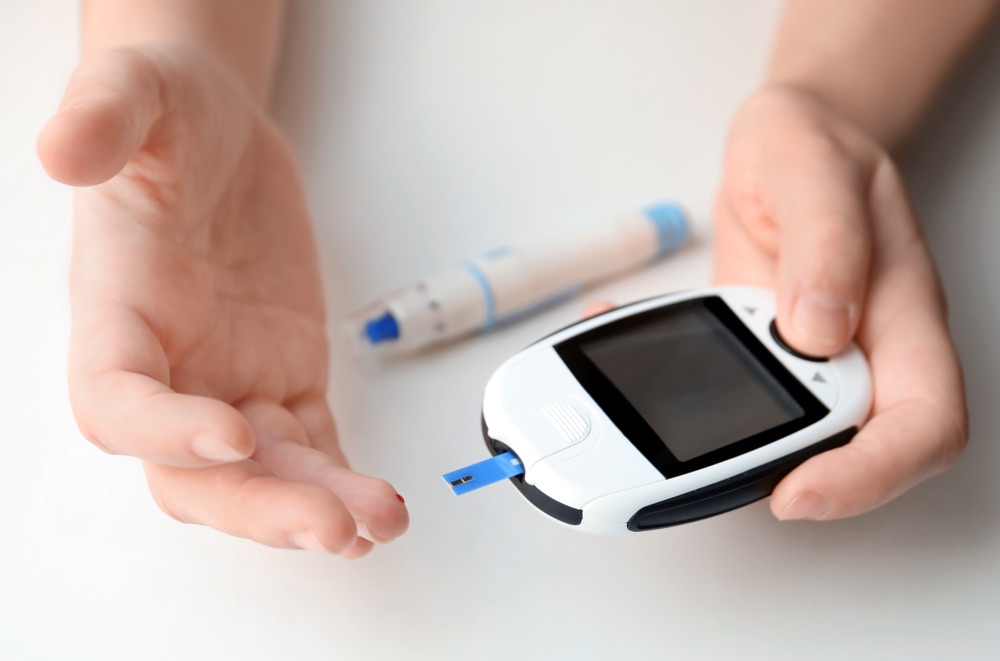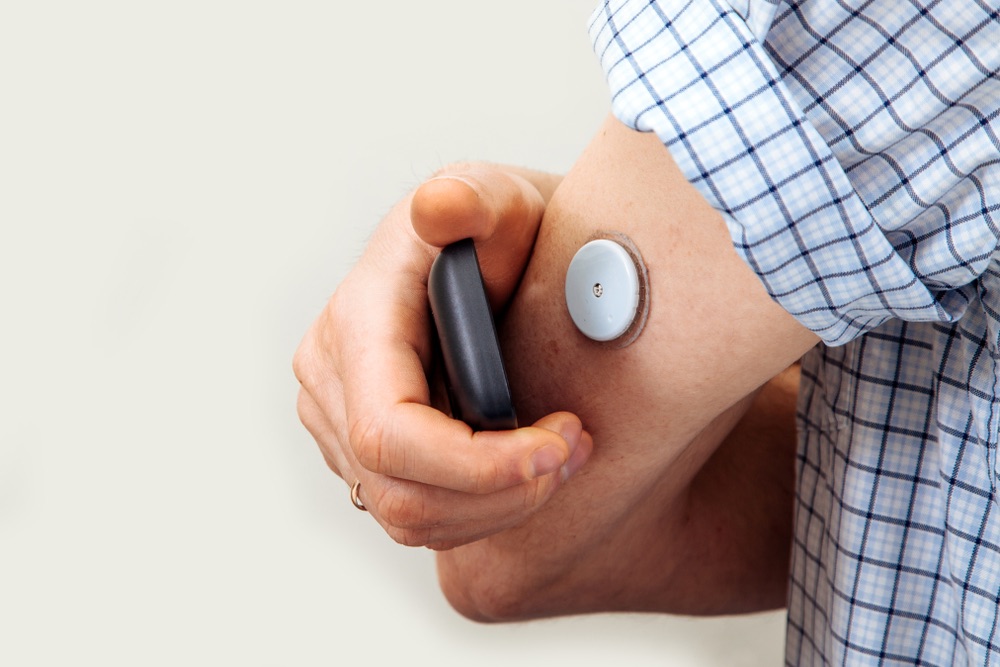- Home
- Dr Sultan Linjawi
Type 1 Diabetes
Type 2 Diabetes
Prediabetes
Gestational Diabetes
- Diabetes Information
- Testimonials
How do I monitor my blood glucose levels when I have type 1 diabetes?

Monitoring blood glucose levels in type 1 diabetes
Blood glucose levels can be monitored by self-monitoring with a glucose meter or continuous glucose monitoring.
Self-monitoring of blood glucose levels
Although diabetes is a chronic condition, it is usually controlled through lifestyle changes, medications, and self-care measures. The main goal of diabetes treatment is to keep blood glucose levels within the target and safe range. Self-monitoring blood glucose levels allows a person to check that their blood glucose levels are within range.
Self-monitoring is an integral part of type 1 diabetes therapy. It is necessary as it can indicate the amount of insulin that is required for correct dosing. Self-monitoring can occur through finger prick tests using the fingersticks and a glucose meter.
Type 1 Diabetes Content |
|---|
| Type 1 Program |
| Overview |
| Risk Factors |
| Symptoms |
| Diagnosis |
| Complications |
| Treatment |
| Diet |
| Monitoring |
| Tools |
| Mental Health |
| Prevention |
Testing blood glucose levels with fingersticks and a glucose meter?
When testing your blood glucose levels through a finger prick test, it’s important to follow the directions of your doctor or the instructions on the glucose meter. It’s important never to share glucose monitoring equipment, as this can lead to infection.
Some general guidelines for testing blood glucose levels include:
- Wash hands with soap and warm water, then dry thoroughly.
- Prepare the lancet device, using a fresh lancet. The lancet will help to draw a small amount of blood from your finger.
- Prepare the glucose meter and test strip.
- Use the lancet to draw a small drop of blood from your finger tip.
- Apply the drop of blood to the test strip in the glucose meter. The result will appear on the display on the meter after several seconds.
- Dispose the lancet in a sharps bin (not in your regular household bin).
How accurate is home testing with blood glucose meters?
Blood glucose meters are reasonably accurate, however there can be some variability between different devices. You can check the accuracy of your meter by taking it with you to your doctor and testing your glucose levels with your machine at the same time as having a blood test. You can compare the results to check if there are any differences. If the results differ significantly, there might be something wrong with your machine and you need to get a new one!
How to prevent inaccurate results
Sometimes you might get a blood glucose result that doesn’t fit with how you feel. For example, you may get a reading that says your blood glucose levels are low, but you aren’t exhibiting any symptoms of hypoglycaemia. If this happens, take a second reading or try testing on an alternative glucose meter if you have access to one.
It’s also important to make sure that you wash your hands thoroughly and dry them before conducting the finger prick test. If you don’t wash your hands properly after eating and before testing, you may contaminate the results. This can occur because of any food residue or crumbs left on your fingers, could provide a falsely high reading.
If you don’t dry your hands thoroughly after washing them, then you may get a falsely lowered blood glucose reading! Any water left on your finger may dilute your blood when you’re testing your glucose levels.
You can also prevent inaccurate results by doing the following:
- Ensure test strips aren’t expired
- Ensure the test strips ‘match’ the glucose meter – some glucose meters have specific test strips
- Draw enough blood for the test strip
- Don’t let the test strip with the blood drop dry before putting it in the glucose meter – insert the strip right away
- Keep the glucose meter clean by storing the meter in a clean dry area to avoid dust getting on the sensor
- Keep the battery fully charged
More articles on type 1 diabetes
For more articles on type 1 diabetes, follow the links below to learn more.
Testing blood glucose levels through continuous glucose monitoring
Most continuous glucose monitoring (CGM) devices transmit blood glucose levels every five minutes. They can even alert you if you’re experiencing a hypoglycaemic or hyperglycaemic event. Flash glucose monitoring is one type of continuous glucose monitoring.
How does continuous glucose monitoring work?
CGM involves 3 different components;
- a sensor to measure the glucose level under the skin
- a device to send this result from the sensor (called a transmitter)
- a device to receive the result and provide a visual readout which can be a phone or a dedicated reader
The sensor is made up of a wire electrode which looks and feels like a hair that is placed usually into the abdomen or back of the arm using a simple inserter device. It is really easy to put in and has a similar feel to an injection of insulin. Once connected to a transmitter, it continually records sensor glucose readings and every 5 minutes transmits an average to a receiver unit, insulin pump, or mobile phone. It transmits these readings wirelessly or via Bluetooth. This averages a total of 228 readings every 24 hours!
As technology is advancing, these systems are getting really clever. It is now possible for your readings to be broadcast to up to 5 different people of your choice, to increase support and help manage your diabetes. So a child’s readings may be sent to the mother, father, sibling or even their teacher.

How continuous glucose monitoring devices can help manage type 1 diabetes
Did you know that finger stick tests alone miss up to 78% of highs and lows? CGMs alert you if trending high or low to take action before you get there. Depending on the model you choose it can actually suspend delivery of insulin before you are low and not resume until you are at a safe level… Wow!
Fingerstick blood glucose monitoring can only telling you what your blood glucose is doing at a particular point in time. The benefit of the CGM is that it fills in the gaps! It allows you to see patterns and trends in your glucose control. This can be really helpful in knowing where to make changes or if you are managing your glucose levels well.
These devices can also be helpful when going to see the doctor. Data can be shared also with family, which can help to reduce anxiety and stress for everyone.
Is continuous glucose monitoring for me?
You may consider CGMs if:
- you experience variability in your blood glucose levels
- worry about hypos (low blood glucose levels)
- you’re taking insulin
- you’re very physically active
- need to know what your blood sugars are doing for work or driving
As we’ve mentioned, CGMs can be beneficial for parents with children with type 1 diabetes. CGMs can help manage diabetes and alleviate fears of low blood glucose readings, overnight sleepovers or camps, and when at school.
As there are now many options on the market it is worth shopping around to find out which system works best for YOUR needs. Cost may also be an issue and does vary between types, how often you need to use the sensors, and if you can get some reimbursement from health funds.
What are the target blood glucose levels for type 1 diabetes?
Below are the target blood glucose levels for type 1 diabetes before meals and two hours after a meal.
| Target levels | mmol/L | mg/dL |
|---|---|---|
| Before meals | 4.0 - 8.0 mmol/L | 72 – 145 mg/dL |
| Two hours after starting meal | less than 10.0 mmo/L | less than 180 mg/dL |
What to do if you think you might have type 1 diabetes?
The first thing if you suspect you may have diabetes is to visit your doctor and request a blood test. Your doctor may perform a finger prick test or a more accurate laboratory blood test. There are a number of ways to diagnose diabetes. Once diagnosed it is very important to get educated!! Once you know what is happening and what to do, you can get back to feeling good again.
What should I do next?
If you experience any symptoms of type 1 diabetes or you have risk factors for developing type 1 diabetes, it is important to get tested for as soon as possible. Some people are at higher risk and need regular testing.
By diagnosing and treating the type 1 diabetes early, it means you can decrease the risk of developing or delay any further health complications of type 1 diabetes, for example nerve damage, blindness, and heart disease. It is important to know that diagnosing type 1 diabetes should not rely solely on using a Hb A1c test.
Once you learn what your type 1 diagnosis is, or if you already have type 1 diabetes, the next most important step is to become educated. You can join the 12-week Type 1 Diabetes Program to help you learn how best to manage the condition. For example, you can learn how best to monitor blood glucose levels in type 1 diabetes. The program is personalised and tailored, giving you more of the content that you want. The program also helps you to stay motivated and teaches you what changes you need to make. The first week is free and full of helpful and crucial information.
Interested in more information on type 1 diabetes?
Follow the links below to learn more about type 1 diabetes.









